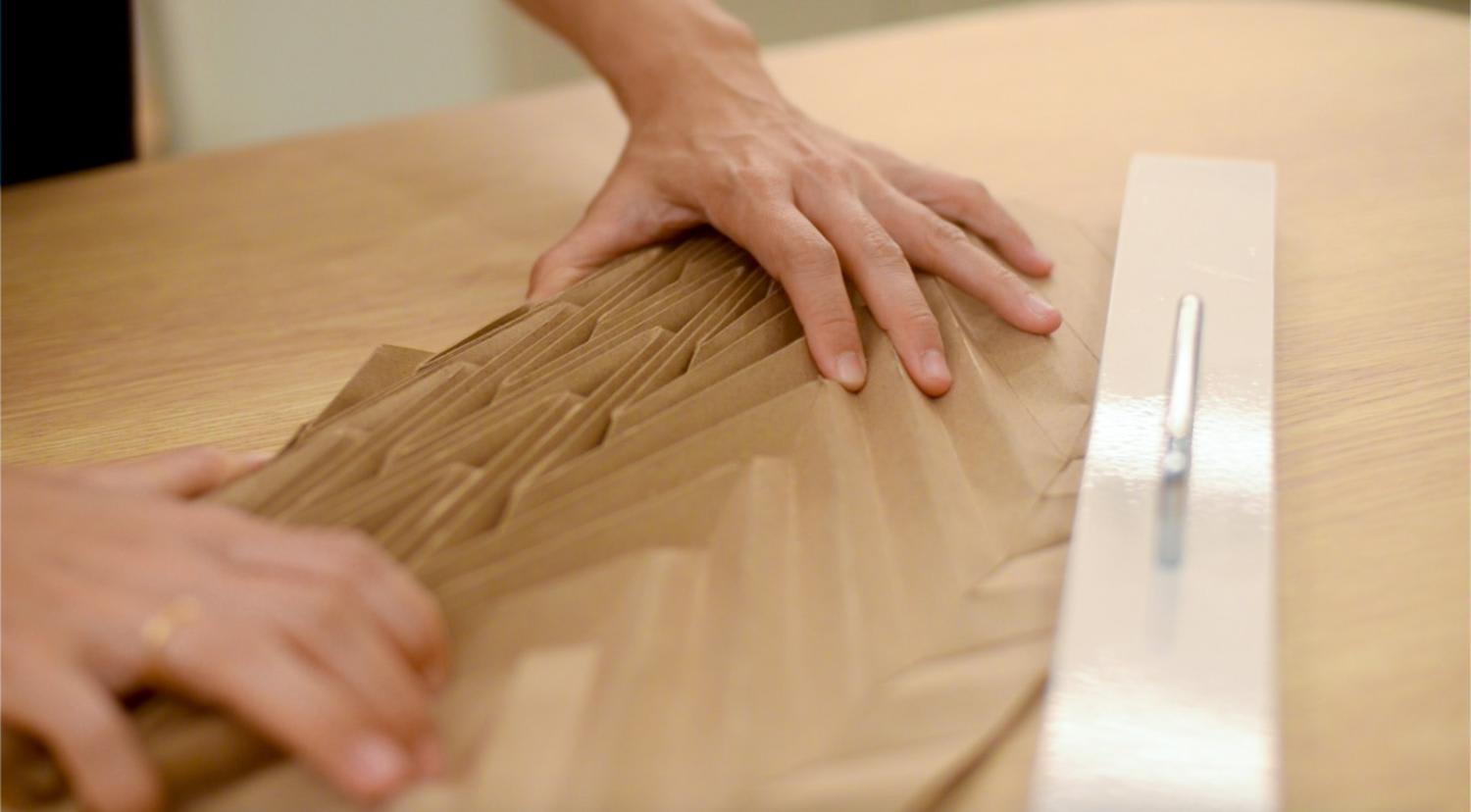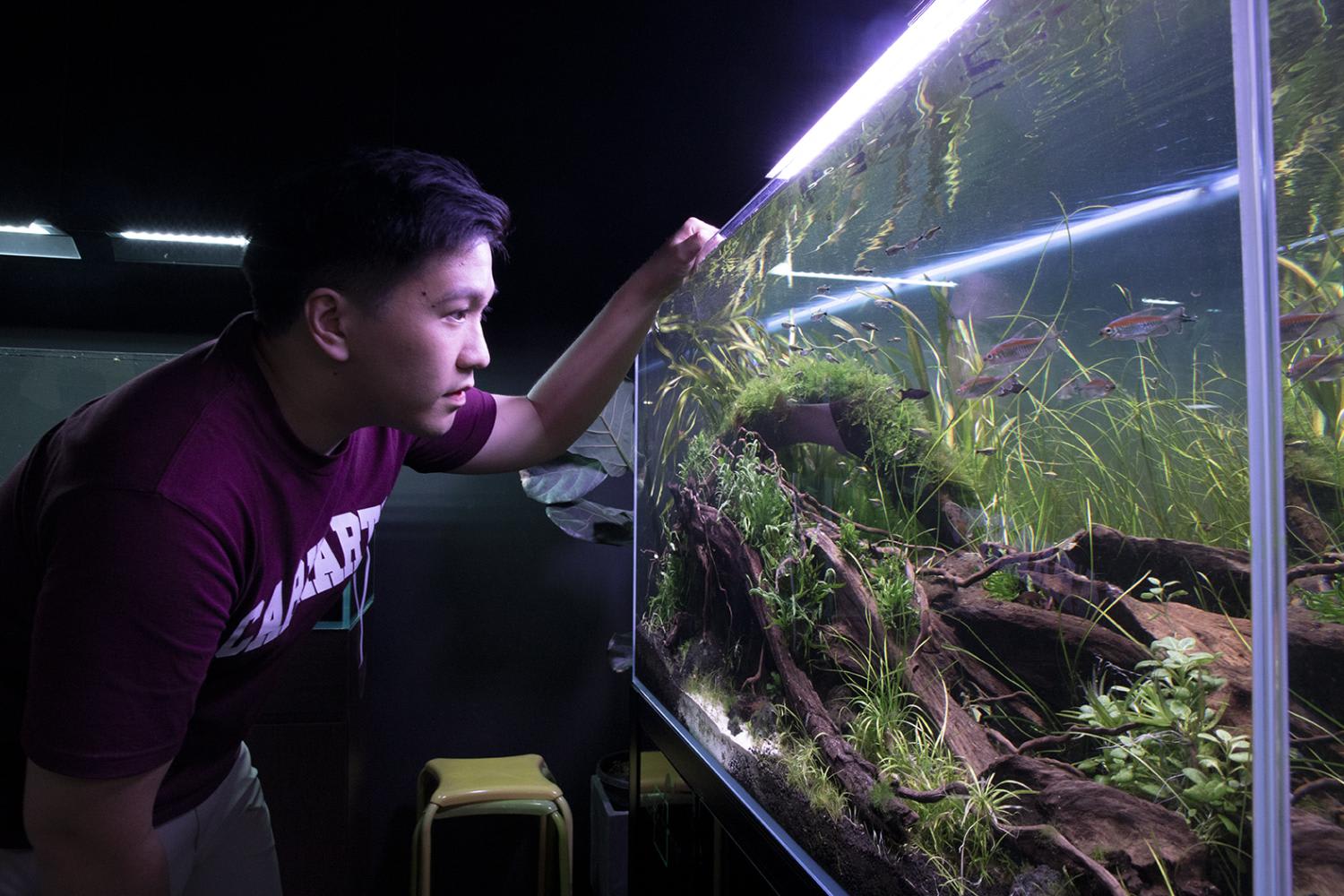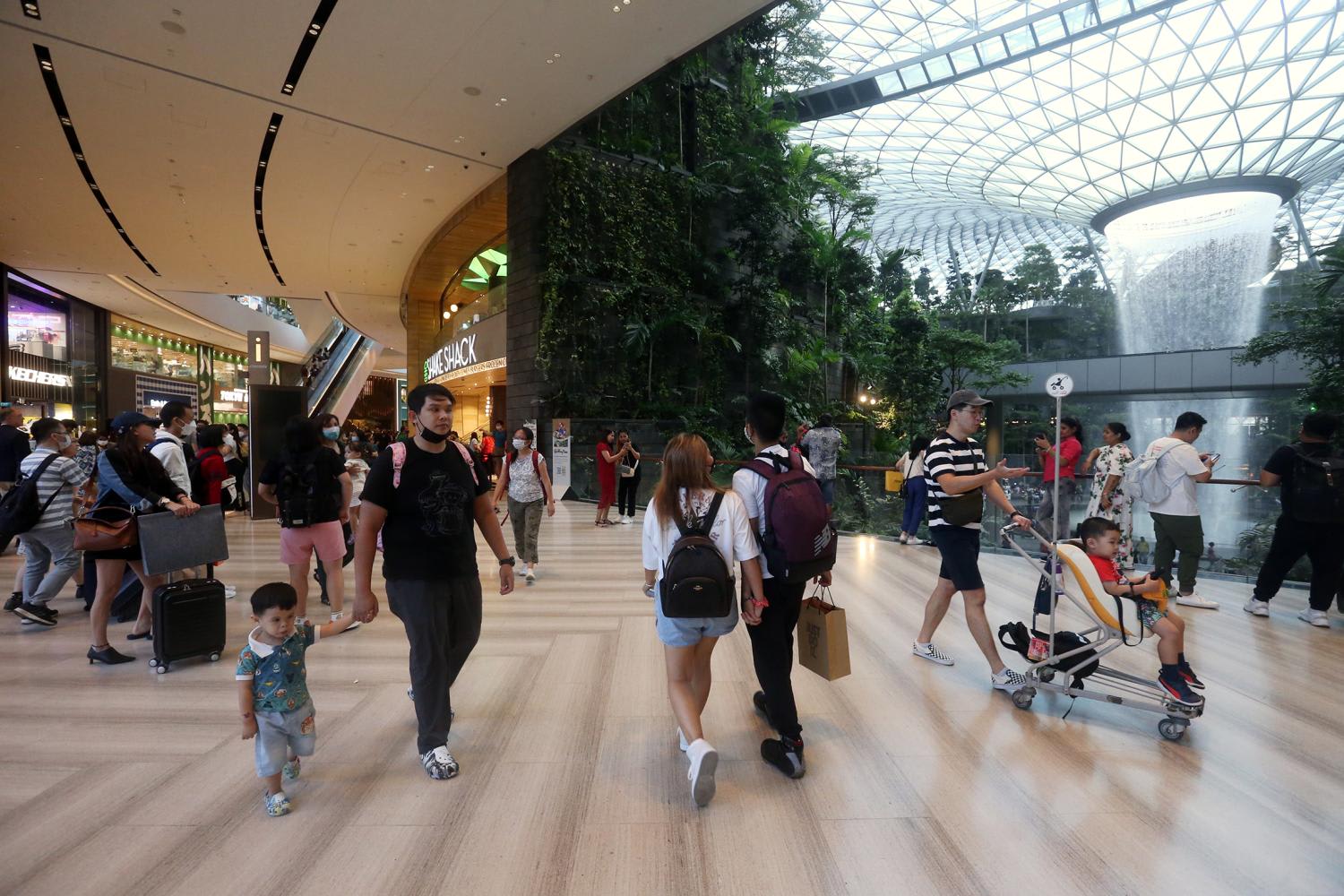The Big Read in short: Post-pandemic, shoppers are looking for that little something extra
SINGAPORE — As the Covid-19 rules in Singapore were progressively eased this year, Ms Melody Ann Gibson decided to resume one of her favourite pastimes which she had to put on hold for over two years: in-store shopping.

An indoor rock climbing wall at Funan mall, which shed its identity as an IT haven and took on a new persona after a S$560 million revamp in 2019.
Each week, TODAY’s long-running Big Read series delves into the trends and issues that matter. This week, we look at how the retail landscape has changed since the Covid-19 pandemic, and what this means for brick-and-mortar shops already under threat from e-commerce. This is a shortened version of the full feature, which can be found here.
-
Since the Covid-19 pandemic, there has been a shift in consumer behaviour, said retail experts
-
Shoppers are adopting a mix of physical and online shopping but expecting personalisation and differentiation from brands
-
This has given further impetus for ‘experiential retail’ — providing customers an immersive experience both in-store and online
-
Retailers that have adopted this strategy said it has worked for them, business-wise
-
Experts said that experiential shopping does not always require grandiose efforts — it could be just about providing a personal touch. Still, they added that it is not a panacea for brick-and-mortar retailers amid the e-commerce threat
SINGAPORE — As the Covid-19 rules in Singapore were progressively eased this year, Ms Melody Ann Gibson decided to resume one of her favourite pastimes which she had to put on hold for over two years: in-store shopping.
These days, the 26-year-old interior designer finds herself heading out to the malls a little earlier when she makes an appointment to meet her friends.
This gives her time to walk around and discover the latest fashion collections or ongoing sales.
“There's definitely this desire to just get myself out there,” said Ms Gibson, who estimates that she goes window shopping about three to four times a week now.
“There are people who always say online shopping is better, but for me, I honestly enjoy shopping physically because I'm able to touch the clothes and try them on. To me, it’s just like therapy.”
But Ms Gibson said she is also looking for new things to do in Singapore. So it was serendipitous that she and a friend discovered a pleated bag-making workshop organised by Singaporean-Israeli fashion label Ginlee Studio.
Ms Gibson described the experience as enjoyable, as she not only learned about the process of making a bag, but got to leave with one that was customised according to her taste.
“I think what draws me to workshops (such as this) is that I can customise things exactly to what I like, and I would know that no one else in Singapore would have it as well,” she said.
Programmes by retailers such as Ginlee’s workshop are part of a strategy known as experiential retail that businesses are increasingly adopting.
The concept is basically the practice of giving a customer a full experience of a product — in some cases, both in-store and online.

LATEST BUZZWORDS: 'EDU-RETAIL', 'RETAIL-TAINMENT'
The intention to allow customers like Ms Gibson to learn the fundamentals of pleating a bag and reconnect the user to their products was partly the reason Ms Gin Lee, co-founder of the eponymously named label, launched the Make In Shop Experience programme in October 2020.
Singapore was then in Phase 2 of the circuit breaker, which allowed most businesses to resume operations, with social gatherings in groups of up to five.
Ms Lee said, however, that even before the pandemic hit Singapore’s shores, there was already talk within the industry in 2019 about the concept of experiential retail because “people were bored by transactional malls”.
“In Singapore, we are surrounded by them,” said the 44-year-old. “So at that point, there were a lot of questions about how to make retail more experiential.”
Some ideas included having cafes within the store, however, Ms Lee and her partner, Mr Tamir Niv, decided to focus on the experience that their brand has strength in.
“Every mall needs a differentiator to give people a reason to visit,” she said.
Mr Guillaume Sachet, partner, advisory in KPMG Singapore, said the pandemic has changed the retail landscape in many ways and accelerated the growth of online shopping.
In order for physical stores to compete with their virtual counterparts, they will have to do something unique, said Professor Lawrence Loh of the National University of Singapore (NUS) Business School.
Otherwise, they will have to lower their prices, though there is only so much they can do so without hurting their bottom line due to higher overhead costs, he said.
The competition that physical stores face from e-commerce has been well-documented, with real estate agency JLL saying in its latest property market outlook report for Singapore that the proportion of online retail sales, excluding motor vehicles, had risen from an average of 6.8 per cent in 2019, to an average of 15.9 per cent last year.
The figure, said JLL in its report published in August, remained at an average of 14.9 per cent between January and May this year, even as the lifting of Covid-19 measures encouraged more community activities.
A similar report from another real estate company, Knight Frank, observed that the rise in footfall at the malls corresponds with a moderation in the volume of online sales as many consumers reverted to physical shopping and dining.
Said Mr Sachet: “Now, post-pandemic, we have observed another shift in consumer behaviour where shoppers are adopting a mix of physical and online shopping but expecting personalisation and differentiation from brands.
“This has evolved into what we call ‘experiential retail’ — an immersive experience across channels, both in-store and online.”
Prof Loh also observed the emergence of two trends when it comes to experiential retail: Businesses are either offering what he calls “edu-retail” for enhancing a shopper’s product knowledge, or “retail-tainment” which is using retail marketing as entertainment, to generate a memorable experience for the consumer.
Ms Gauri Talathi-Lamb, the chief executive officer of du Boulay Contracts, a commercial refurbishment contractor under the MBH Group, suggested another factor behind the demand for experiential retail.
She said that in the past, people would go to a place of worship, or to some other community gathering spot, to have conversations with their neighbours.
“Since Covid, however, that has been disrupted quite a lot and the younger generations are missing that ability to connect with the community... people are missing that community element.”
As such, Ms Talathi-Lamb believes that the main goal of experiential retail is to provide people with a community element that they had been missing.
COMMUNITIES FIRST, BUSINESS LATER
Indeed, for most of the retailers TODAY spoke to, community-building seemed to be top of the agenda when it comes to experiential retail.
Over at Midview City along Sin Ming Lane, Living Shrimply co-founders Eugene Ng, 26, and Chean Shao Jie, 24, had the vision of an aquarium store that was more than a place to pick up supplies for the hobby when they turned their e-commerce business into a physical shop in February.

Mr Chean said that the aquascaping community is not large, and it is daunting for anyone trying to get into the craft of arranging aquatic plants, as well as rocks and other natural elements, in an aquarium tank due to the sheer amount of information available.
To make it easier for beginners, they wanted to create a space where they could share the relevant information with those who needed it.
But in order to convince hobbyists that they know what they are talking about, the men created what Mr Ng jokingly refers to as a “budget S.E.A Aquarium” — a reference to the tourist attraction at Resorts World Sentosa.
Immediately on the right after entering the store, visitors can step into a darkened gallery where beautifully landscaped slices of nature — from a tropical jungle-themed paludarium to aquatic tanks popping with vibrant hues of red and green — are highlighted on all four walls.
In the centre is a cushioned bench for visitors to sit and admire the works of art — much akin to a museum.
The owners said some visitors make a special trip down to the store just to see the tank displays, after learning about them on social media.
That said, no one is pressed into buying anything when they visit and the men are more than happy to just provide information about the hobby.
The men at Living Shrimply acknowledged that while their business strategy does not always immediately lead to sales, it helps to build a bond with their customers who return to buy something at a later date.
“It’s better for us to focus on relationship building than hard selling. No one wants to be forced to buy something. It drives them away,” said Mr Chean.
While Mr Ng was unable to provide figures, he said sales have “definitely increased” compared to when the store was just operating online.
Meanwhile, Ms Lee said a benefit of running workshops is that they help introduce the brands to people who may otherwise not have heard of them, and it has led an approximate 20 per cent increase in the label’s overall revenue.
HOW HAVE EXPERIENTIAL RETAIL MALLS FARED?
While efforts by Living Shrimply and Ginlee Studio have led to positive business outcomes for both, can the same be said for shopping malls touting experiential concepts?
In Singapore, two malls are known for this — Jewel Changi Airport, which draws in crowds with its iconic architecture and lush indoor gardens, and Funan, which shed its identity as an IT haven and took on a new persona after a S$560 million revamp in 2019.

A 2019 press release from Funan’s landlord, CapitaLand, described the mall as a place for “experiential and activity-based retail” that includes an indoor rock-climbing wall and an indoor cycling path.
CapitaLand also jointly manages Jewel with Changi Airport Group.
Between Funan and Jewel, the experts interviewed had little doubt that it is the latter which is a runaway success and a better example of experiential shopping done right.
Nevertheless, NUS’ Prof Loh noted the fact that Jewel has the advantage of being located right next to Changi Airport's Terminal 1.
"I’ve told people before, when you arrive in Singapore through Terminal 1, you don’t arrive into a country, you arrive into a shopping mall," said Prof Loh, adding that this gives Jewel a constant stream of fresh visitors in the form of tourists.
"Whereas for Funan, after awhile, you have to cater to repeat visitors. So now when you go to Funan, the novelty factor from 2019 has worn off."
At least one business at Funan said there have been months when its revenue is in the red, while TODAY spotted other stores that have already shuttered.
About half a year after Funan reopened, to much fanfare, Singapore confirmed its first case of Covid-19 in January 2020, and the virus soon spread rapidly, eventually causing over two years of mayhem for businesses island-wide.
Mr Gary Lin, the deputy director of Temasek Polytechnic’s (TP) School of Business, said the jury is still out on whether Funan will be successful.
“Its (experiential offerings) likely help but whether it justifies the investment is to be determined,” said Mr Lin. “Jewel is likely to be more successful than Funan because of higher concentration of tourists, attractive environment, and the range of food and beverage and wider appeal.”
EXPERIENTIAL RETAIL NOT THE PANACEA
While the experiential concept has been touted as the future of retail, it is not necessarily the best way forward for all brick-and-mortar stores, said the experts interviewed.
Suburban malls, for instance, are unlikely to need it as they serve a “utilitarian function”, said Prof Loh.
“Visitors to these malls often want to just buy something fast, head back to where they are staying. Too much of this experiential thing can be pretty annoying,” he said.
And whether the experiential concept works or not for a business is also tied to a practical question, said TP’s Mr Lin.
“It is about whether it is worth investing in. Can retailers afford to do it once, and then to continually innovate and transform?” he said.
For one multi-label fashion boutique owner at Wheelock Place, the answer is no.
Madam Irene Lee, the owner of Lafont, said that it is not only a challenge for her to digitalise her operations, but she also lacks the expertise to pivot her business model.
The 53-year-old, who runs the shop with one other employee, said: “For retailers like us, we hardly have the time also. When you’re in the mall, you start work at 11am and close at 9pm. Then there is the issue of manpower. All these are costs.”
But given how quiet her side of the mall is, Mdm Lee said there have been months where she has not been able to cover her monthly overheads, which can amount to more than S$10,000.
Still she enjoys the patronage of a regular pool of customers, who have become friends over the years.
“Sometimes they’ll drop by for coffee, and maybe I have something new to offer which they buy. Other times I just offer to alter their clothes, which is an extra service,” said Mdm Lee.
And it would seem that Mdm Lee is offering a form of experiential shopping — without even realising it.
Providing customers with a memorable experience does not always have to grandiose. Sometimes, it is just about providing a personal touch.
“Your experiential event could be something as small as inviting your known clients for a glass of wine after shopping hours and then putting it on Instagram,” said du Boulay Contracts’ Ms Talathi-Lamb.
“It is still a positive experience, and it shows that you've treated the people who shop with you and buy from you in a special way and that goes a long way."
She added: "So, it doesn't have to be a big event, it can be something small but engaging and that can make a big difference to how your customers and clients perceive you.”











